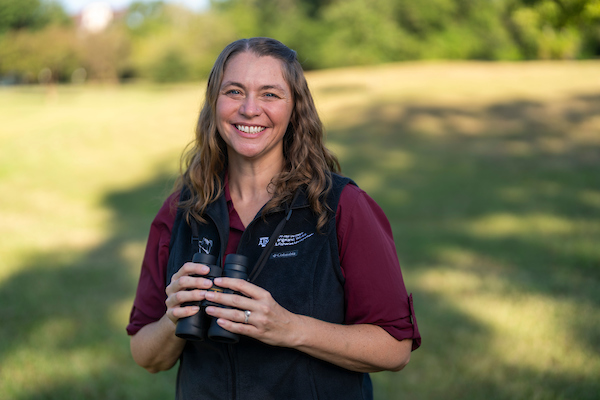Aiming fire at seedlings may be key to rangeland mesquite control
Writer: Kay Ledbetter, 806-677-5608, [email protected]
Contact: Dr. Jim Ansley, 940-552-9941, [email protected]
VERNON – Fire must be effectively managed to get the best control of mesquite seedlings, a Texas A&M AgriLife Research rangeland ecologist said.

Dr. Jim Ansley of Vernon recently published study results in “Rangeland Ecology and Management” journal that indicate both season and intensity are important factors in the mitigation of mesquite seedlings by fire.
“We know adult mesquite trees are fire resistant because they resprout following a fire,” Ansley said. “We have determined that range managers might have a greater success of mesquite control with fire if their efforts are aimed at the seedlings.”
In the study, mesquite seeds were planted in mid-grass and tall-grass plots in the spring and then burned in the winter at 10 or 22 months seedling age or in late summer when they were 17 months old.
He said summer fires were especially effective in the mid-grass fuels and yielded a higher death rate when the seedlings were 17 months old than did earlier winter fires when seedlings were 10 months old.

However, Ansley said, this same advantage of summer over winter fires is not seen in higher fuel load areas, such as those with tall-grass types. In that case, both seasons had a high death rate of trees after fire.
The air temperature was, of course, higher during summer fires, and this greatly increased fireline intensity on the mid-grass plots, but only slightly increased intensity on the tall-grass plots, he said.
Grass fuel amounts were similar for both winter and summer fires in the mid-grass plots, about 1,700 pounds per acre, and slightly higher in summer than winter in the tall-grass plots, 6,900 versus 5,950 pounds per acre.
“One of the most important conclusions was that there was a very close positive relationship between fireline intensity and seedling mortality, especially in winter fires,” Ansley said. “So, conditions that yield high fire intensity such as higher fuel loads or summer burning will have the greatest effect on seedling mortality.”
Summer fire in lower-grass fuel amounts may accomplish the same level of mesquite seedling mortality without the need for lengthy grazing deferral to accumulate sufficient grass fuel needed for a successful winter fire, he said.
The published paper shows a common scenario for controlling mesquite seedlings with fire. Typically, a drought year followed by a wet spring accelerates mesquite seed germination, Ansley said.
If the pasture remains ungrazed or lightly grazed, this would create the highest probability for a natural fire to occur within five to 20 months after mesquite seedling emergence.
“This is probably how mesquite was kept in check naturally before Europeans settled the region,” he said. “The introduction of cattle and fire suppression disrupted this natural cycle and mesquite populations exploded.”
Ansley said his results show a prescribed fire applied during this period, either in winter around February at about 10 months seedling age or in late summer at about 17 months age, reduced the number of surviving mesquite seedlings by 35-80 percent in mid-grass and over 75 percent in tall-grass stands. Mortality in winter fires in the mid-grass fuel type was never more than 35 percent, however.
“So you need either higher fuel or a summer fire to really be effective.”
Any removal of grass by livestock grazing during this period of high grass accumulation would obviously reduce the probability of higher fireline intensities during the brief window of time when seedlings would be vulnerable to a prescribed fire, Ansley said.
Certainly, he said, more research is needed to explore this critical window of mesquite seedling vulnerability.
To see the full results of Ansley’s study, go to http://bit.ly/1H4vl7y.





